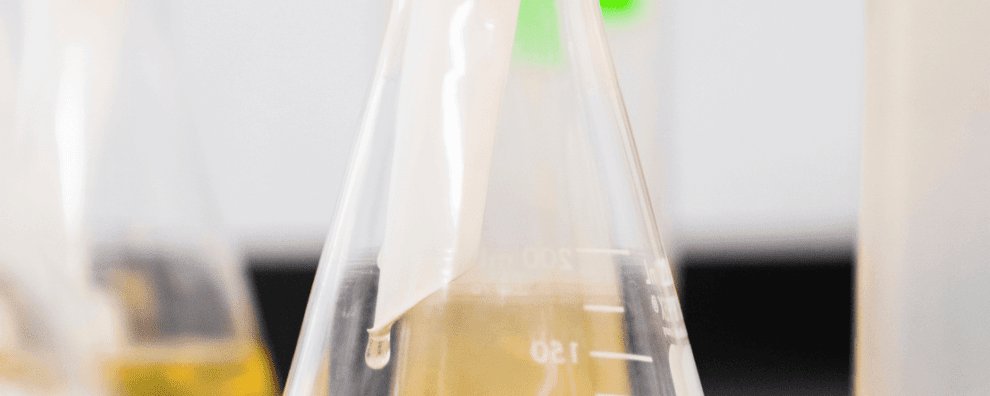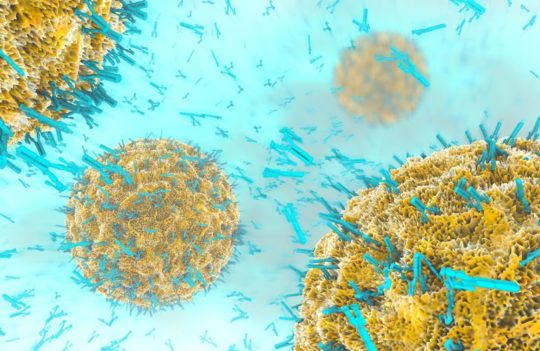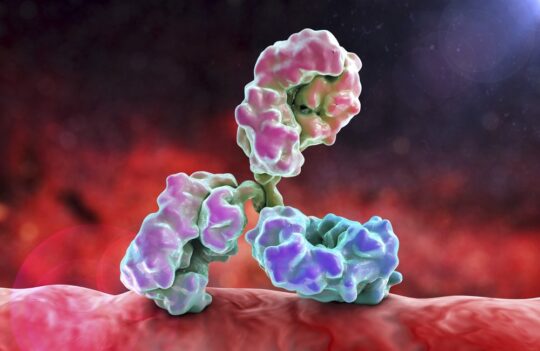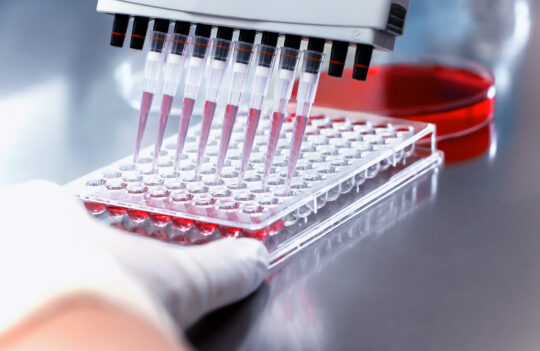 Antibody production
Antibody production
How to leverage recombinant monoclonal antibody production to increase clinical success rates
Ever since the onset of recombinant technology, therapeutic biologics production has gradually shifted from native to recombinant expression. Today, recombinant monoclonal antibody production is the preferred method to obtain these biotherapeutics. These molecules are typically generated in stable cell lines engineered for monoclonal antibody production. The technology has greatly improved the reproducibility of the production process and further allowed an increased manipulation of the antibody structure and properties. In the future, the manipulation of certain antibody attributes is expected to increase even more the already high “developability” and rates of clinical approval of these biopharmaceuticals.
Going beyond affinity to increase clinical success rates
Monoclonal antibodies therapeutics are becoming a vital part of our healthcare systems. Over the past 30 years, success rates for clinical approvals have been steadily increasing. In 2018, 17-25% of the antibodies entering phase 1 clinical trials were granted approval for clinical applications. Despite the high levels of success in comparison to small drugs, the past decades have also exposed the fragilities of the antibody development pipeline and revealed new opportunities to improve the process.
Typically, the main concern when developing a new antibody is maximizing target binding affinity. This resulted in a poor understanding of how other characteristics may affect the development of new therapeutics.
Frequently, poor characterization at the early stages may lead to unexpected issues in antibody development, added difficulties, and reduced success rates during clinical trials. Sometimes, issues affecting the antibody stability during storage such as the potential for aggregation, pharmacokinetics, pharmacodynamics, and cross-reactivity are only detected during later stages of recombinant monoclonal antibody production and development.
Experts argue that to increase even more the success rates of clinical approvals will involve the development of robust characterization methods adapted for low quantities – thus, adapted to the quantities typically obtained during the early stages of development.
Improving recombinant monoclonal antibody production
Today, antibody discovery relies mostly on the generation of hybridomas in different hosts (mouse, transgenic mouse, rabbit, etc.) or on screening diverse antibody libraries using display technologies (e.g. phage display). Despite the higher diversity and shortened timeline for antibody discovery in comparison to previous technologies, the selection of antibodies according to their predicted developability is still challenging.
Most antibody screening methods are designed to maximize antibody affinity but tend to overlook other important characteristics of the molecule. This narrow selection criteria results from the technical limitations associated with measuring other important characteristics using low sample input. For this reason, many issues are only discovered later in the development process.
Screening for cross-reactivity and self-reactivity
One of these issues is cross-reactivity. It is estimated that a fraction of the naïve and immune antibody repertoire consists of low-affinity molecules capable of binding several structurally unrelated antigens. The undesirable characteristic can be detected through traditional binding assays against a panel of undesirable antigens (e.g. microarrays, ELISA). However, these screening methods are hard to scale up when working with high diversity samples (i.e. 109-1010 different clones).
One way to decrease costs and increase the sensitivity of these assays would be to couple the stage of antigen-specific antibody enrichment with a step of negative selection using undesirable targets. Methodologies such as binding poly-specificity reagent (PSR), baculovirus particle (BVP), and cross-interaction chromatography can be adapted to low sample inputs and designed to eliminate cross-reactivity early on the development pipeline.
Screening biophysical and biochemical properties
High aggregation, high viscosity, susceptibility to chemical degradation, and reduced stability are often associated with typical recombinant monoclonal antibody production challenges. Although many other factors contribute to the successful development of therapeutic antibodies, the critical evaluation of these biochemical and biophysical properties can help selecting candidates with fewer development risks.
These properties can be initially evaluated in silico followed by experimental studies using low sample input techniques. Due to the increasing number of studies on the properties of antibodies, it is now possible to detect problems based on the predicted structure and amino acid sequence. For instance, we now know that asparagine and aspartate residues in CDRs (complementarity-determining regions) are susceptible to deamination and isomerization. Moreover, exposed hydrophobic or charges regions within variable domains were also shown to correlate with increased aggregation and faster antibody clearance.
Following these initial studies, promising candidates can be evaluated experimentally by producing low amounts using transient transfected mammalian systems. At this stage, only properties that are independent of the expression systems can be evaluated, such as hydrophobicity, solubility, and thermal stability. However, choosing leads based on this initial evaluation was shown to reduce development risk in the long-term.
Concluding remarks
Many promising antibody therapeutics fail during clinical trials. These failures are often linked with poor biophysical or biochemical properties, and undesirable reactivity that fail to be detected during early antibody development stages.
To reduce risks and maximize the chances of success in clinical development, experts agree that it is increasingly important to select antibodies not only based on their binding efficiency, pharmacokinetics, and pharmacodynamics but also based on their predicted (in silico) and experimental properties.
For this reason, methodologies also need to adapt to low sample input. These screening procedures may increase costs during the early stages, but they are reported to decrease the overall production and discovery costs of new therapeutic antibodies.
- Hedberg, S. H. M. et al. Cross-interaction Chromatography as a Rapid Screening Technique to Identify the Stability of New Antibody Therapeutics. Eur J Pharm Biopharm. 2018; 133:131-137. doi: 10.1016/j.ejpb.2018.10.009
- Jain, T. et al. Biophysical properties of the clinical-stage antibody landscape. PNAS. 2017; 114(5):944-949. doi: 10.1073/pnas.1616408114
- Kaplon, H. and Reichert, J. M. Antibodies to watch in 2019. 2018; 11(2): 219-238. doi: 10.1080/19420862.2018.1556465
- Xu, Y. et al. Addressing Polyspecificity of Antibodies Selected From an in Vitro Yeast Presentation System: A FACS-based, High-Throughput Selection and Analytical Tool. Protein Eng Des Sel. 2013; 26(10):663-70. doi: 10.1093/protein/gzt047
- Xu, Y. et al. Structure, heterogeneity and developability assessment of therapeutic antibodies. MAbs. 2019; 11(2): 239–264. doi: 10.1080/19420862.2018.1553476




